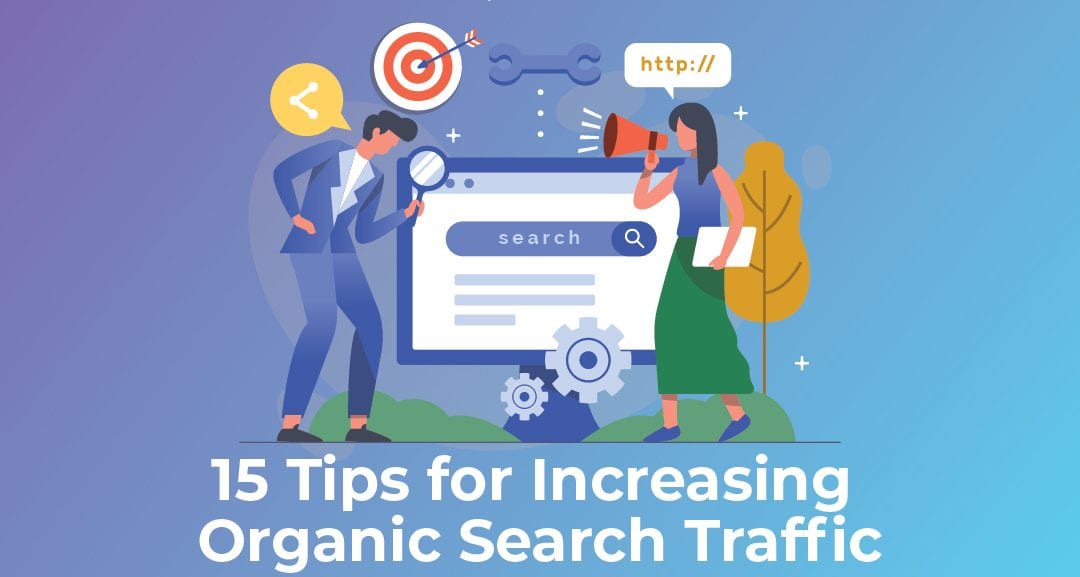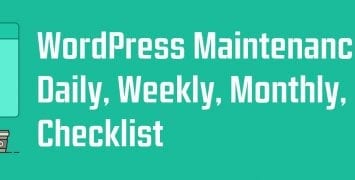Table of Contents
Whenever you begin an online business or venture, the main piece of advice everyone will give you is to increase your organic search traffic. The sites that generate the most traffic will gain the most business and therefore profit. Simple enough, right?
But what happens when you’re a startup that cannot compete against the market-leading pages on Google? You might feel as though you’re fighting a losing battle for many years, and we won’t lie and say it’ll be easy to get that top spot.
Many site owners take years to get to the position they want to be in, and others give up before they can reap the rewards. We don’t want you to have all your hard work put to waste, so we’ve come up with the top 15 tips for increasing organic search traffic.
We know that there are hundreds of tips and tricks out there on this subject matter, and we bet you’ve read every single one of them. So, instead of reiterating the same old content for you, we’ve found a handful of lesser-known tips that will help you in your quest to get that top spot on Google’s search engine.
What is Organic Search Traffic?
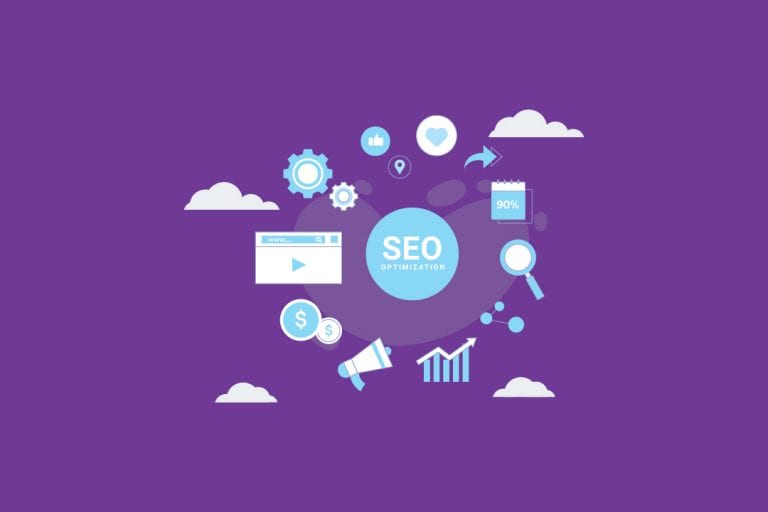
When visitors stumble across a website thanks to a quick Google search, these results can either be paid or unpaid. Paid search results are the advertised pages that you see at the top of the Google results, and these are positioned better than unpaid alternatives.
If you searched for anything on Google it is more than likely that you’ll see the paid search results before the unpaid. Therefore, you’ll click on one of these results instead of scrolling down to the organic search results.
Not everyone wants to pay for search traffic; however, which is where the organic search results come in. Organic visitors find the website straight from the search results on an engine such as Google, Bing, and Yahoo.
Organic search traffic does not come from any visitors that are referred to your website from another page. Search Engine Optimization (SEO) focuses primarily on marketing your website to new organic search traffic.
What is Search Engine Optimization?

Search engine optimization refers to the process of creating and developing a website so that its visibility increases during searches relating to the site. As we know already, the higher your site on the search engine, the more traffic and therefore the more revenue you’ll benefit from.
There are bots used for search engines to collect information about your site and rank it in an index. The algorithm will then use this index to generate the order in which the sites should be ranked for each search.
There are a few different factors that the bots look out for when generating information about your website pages, including the use of keywords and the quality of your content. You should take all of these factors and try to incorporate them into your pages to have the best chance of ranking highly on the search engine.
Optimizing your site will help to get you seen on the first page of the search engine your customers are using. Multiple studies have shown that only around 25% of potential visitors click through to the second page of Google results.
So, your position on the first page is incredibly important for your site’s traffic. And if you don’t want to pay for the traffic, you’re going to need to work even harder to get that organic search engine spot.
Is Organic Traffic The Same As Direct Traffic?

So, we’ve established that organic search traffic is the complete opposite of paid search traffic. But where does direct traffic fit into all of this? Direct traffic is not the same as organic traffic because the former requires the visitor to enter your URL into the search bar.
Direct traffic often comes from partners or current customers. Once you’ve gained all of your new customers from organic search traffic, direct traffic will be able to tell you how many of them have turned into recurring customers.
While direct traffic is not the most important thing to look into when you’re trying to grow a website, it is beneficial to keep tabs on. This type of traffic will show you the quality of your traffic and whether you’re drawing your customers back for more.
15 Practical Tips For Increasing Organic Search Traffic
Now that we’ve taken a quick look into what organic search traffic is and why it’s so important to your business or website, let’s discuss how you can go about increasing your search traffic organically.
Below are 15 of the most effective tips to increase organic traffic to your site. Of course, the most effective method of doing so is to implement all of our tips into your website, but we know that that can be overwhelming and near impossible.
So, instead of stressing out too much about having to go back and change every single thing about your website, we would suggest taking two or three of these tips and incorporating them into your website.
After you’ve done this, you can come back and begin to make use of more of our tips. As we mentioned before, some websites take years to appear on the top spot for organic search traffic, so don’t expect to see instant results.
Instead, take your time and don’t try to change too many things at once – this way you’ll be able to see what works for your individual site and what doesn’t.
1. Focus On User Experience Across Your Site

User experience is incredibly important when it comes to building your site and getting the search engine bots on your side. Google wants to offer its users the best websites to answer their questions, so it stands to reason that the most user-friendly sites will rank highly on the search results.
Google’s bots rake through your pages to find all of these different flags and features. All of this information then goes into your ranking for each search. The user experience of your site is one of the most important flags that concern your ranking, so you need to ensure that it’s impressive.
Outdated websites or untrustworthy pages are likely to lower your ranking. Even if you do generate some click-throughs, the visitor might decide against using your page and click back to another one. This means that user experience will not only affect your organic search traffic but also your direct traffic as well.
You want to ensure that your bounce rate is low so that Google will reward you with higher rankings. The bounce rate refers to how many people click on your page only to leave without any additional interaction. The amount of time spent on the page offers no correlation to your bounce rate.
While the bounce rate is not the most important factor when being ranked by the Google algorithm, it certainly doesn’t hurt to have a low rate. User experience will help to lower the bounce rate and therefore heighten your rating.
There are plenty of ways that you can make your site’s user experience better, and many of them are included within our other 14 tips below. Some of the most beneficial methods are making sure that your content is high-quality and optimized for the web, increasing your website speed, and improving the experience of all your pages.
You can improve page user experience by using an online tool to analyze how your visitors are interacting with your website. Crazy Egg is a great option that allows you to see how your pages are being interacted with by the use of heat maps, confetti maps, and scroll maps.
Other great online tools to use are Optimizely, ClickFlow, and Google Optimize. All of these tools will allow you to see what is working on your pages and what needs to be improved. Remember, visitors are the driving force behind your site’s revenue so don’t neglect their experience!
2. Create A Diverse Quality Backlink Profile
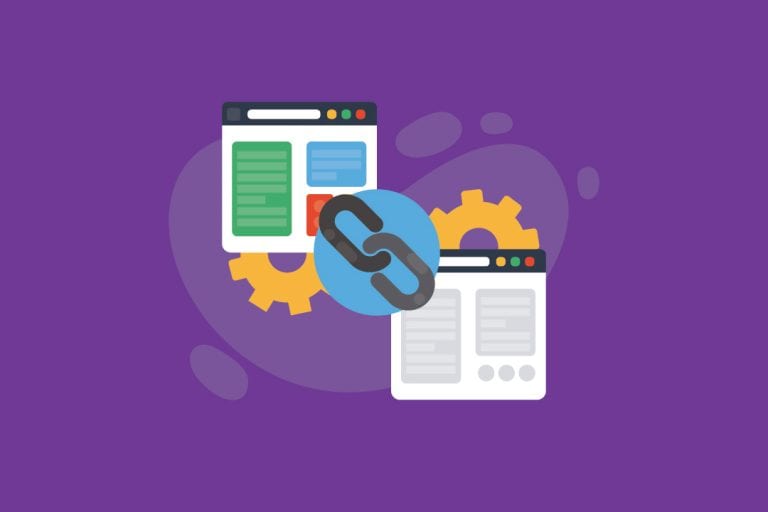
The term backlinks refer to links that point to your websites from other sites, like a recommendation or an upvote. Google takes backlinks very seriously and they are one of the top three ranking factors, so they’ve very valuable if you’re fighting for organic search traffic.
Do you want the good news first, or the bad? Starting with the good news, many site owners believe that backlinks are no longer important so you don’t have much competition when trying to get one. The bad news; however, is that they are very difficult to obtain.
Google bots tend to believe that the more backlinks a site has, the more popular and trusted they are. This is not untrue, but it can really hurt your search traffic if your competition has a lot more backlinks than you.
More popular sites tend to have more authority and more backlinks behind them. This will push them higher on the Google search results than your positioning, so you’ll need to get some more backlinks.
You can check how many backlinks your competition has by using a backlink checker online. The Ahrefs backlink checker is one of the best, but there are also cheaper alternatives if you’re trying to keep your costs low.
Once you’ve found how many backlinks your competitors have, this will give you a rough idea of how many backlinks you need so that you can remain in the running for that top spot.
However, spam links can hinder your business rather than help it, so you need quality backlinks. Google bots can recognize a bad link and ignore them accordingly, so make sure that you only choose high-quality links to help your position.
3. Conduct Thorough Keyword Research
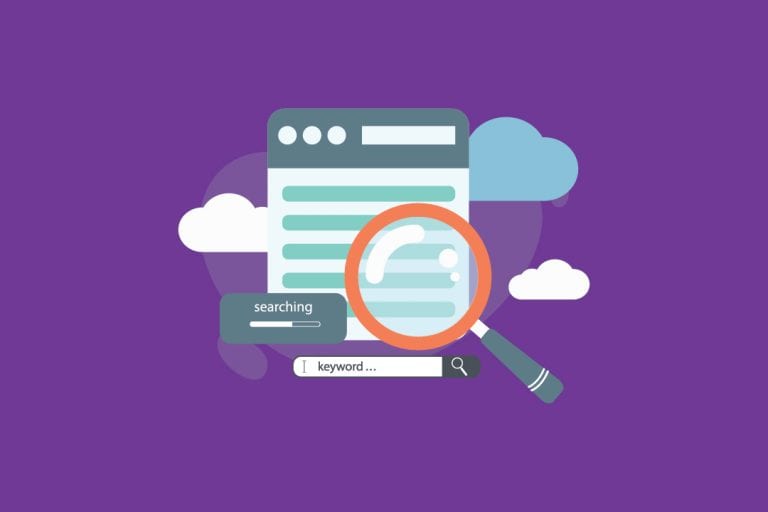
Keywords are used as signposts for search engine bots, so you can see why they’re incredibly important tools. Conducting keyword research will help you to see who is searching for what you want to talk about.
It will also give you a better understanding of what people want to know about the topic that you’re writing about. There are plenty of keyword research tools out there for you to use, making your research much quicker and easier.
Moz is perhaps the best keyword research tool. It will help you to find your next keywords to use, analyze the effectiveness of each potential keyword, and find the keywords that your competitors are using. It’s an easy way to effectively research keywords without spending hours doing so.
Ahrefs is another good tool that site owners use for a number of different reasons. It offers you a keyword researching tool that offers you over 7 billion keywords to search through with information about each one such as the click-through rates, search volume, and the difficulty of the keyword.
Finally, SEMrush is another multipurpose tool that offers you a keyword explorer as well. It can analyze your competitor’s keywords. You can search for your competition through the SEMrush search bar and view a list of keywords they’re using, along with how much traffic they’re getting from each one.
Keyword research can be an excellent tool when trying to rank high enough to get that top spot on the search engine.
4. Target Less Competitive Keywords With High Potential

We know what you’re thinking – no one is going to visit your website if you’re not using the popular keywords. Well, using the most common keywords can actually rank you lower and hinder your opportunity to be on the top spot.
If you’re trying to get to one of the top spots on a Google search by using a popular keyword, the chances of you overpowering the market leaders are very slim. If you’re behind all of these competitors on the search results, you’re not going to get much organic search traffic, if any at all.
For this reason, there is no point in you trying to compete with the market leaders unless you have a shot. Once you accept that you cannot yet run with the big guys, you’ll be able to work much more effectively on your level.
Keywords that generate a lower search volume offer you a better chance of grabbing one of those top spots. Compare your potential traffic from this top spot of a keyword that generates 1,000 searches a month compared to being on the second page of a keyword that generates one million searches per month.
Believe it or not, you’ll likely gain more organic search traffic from the former opportunity rather than the latter. You can slowly work your way through less popular keywords to the biggest keywords. Taking on too much too soon can hurt your site, so leave it as a slow-burning process.
5. Improve Your Site Speed

No one likes using a slow website, and we think that you can agree with us on this one. Even Google agrees with us! Search engines want to offer their users the best experience possible so that they remain popular – there is a reason why Google lets you know how long it took them to generate your results.
The speed of your site is just another factor for the Google bots to observe and take note of. The lower the speed, the lower the ranking. So, how do you improve the speed so as to not upset Google bots?
The main cause of slow speeds is a poor-quality host, so make sure that you’re using one of the best. Luckily, there is a simple way of checking your site speed and, like with many of our other tips, it’s to use an online tool.
ByteCheck is a high-quality tool that will tell you your TTFB (time to first byte), which will tell you how long it takes the server to respond. Using one of these tools will allow you to see what Google sees when they’re measuring up your site. Make sure that the result is no higher than 500ms.
If you want to make your site speed higher, you can switch to another hosting company, make sure that you’re not using too many plugins, or lower the size of your images. Just make sure not to reduce the quality of the images as this might reduce the user experience.
6. Optimize Your Content

Your content needs to be optimized for the web so that the bots can rank the pages higher due to a higher quality of content. This is relatively easy to do, but it might take you a long time if you have pages and pages of content to go through and rectify.
For starters, your content needs to be high-quality and engaging. Even if you’ve followed every other tip on this list, if the content is not up to scratch, your pages are not going to be ranking highly.
You’ll need to write in short paragraphs when writing for the web. While other forms of writing can handle longer paragraphs, big chunks of content will not hold your viewer’s attention and they’ll click off of your page quickly. Keep your paragraphs to 3 to 4 sentences.
Similarly, the length of your sentences should be shorter, but you can leave some longer ones in too. If your visitor is viewing the page on a mobile device, long sentences will take up their whole screen and they won’t read it.
Make use of subheadings, bulleted lists, and white space. These tools will ensure that the text is broken up so that your visitor doesn’t feel as though they’re reading for too long. Images will also give your visitor a break from reading and keep them engaged in your content.
7. Check For Keyword Cannibalization
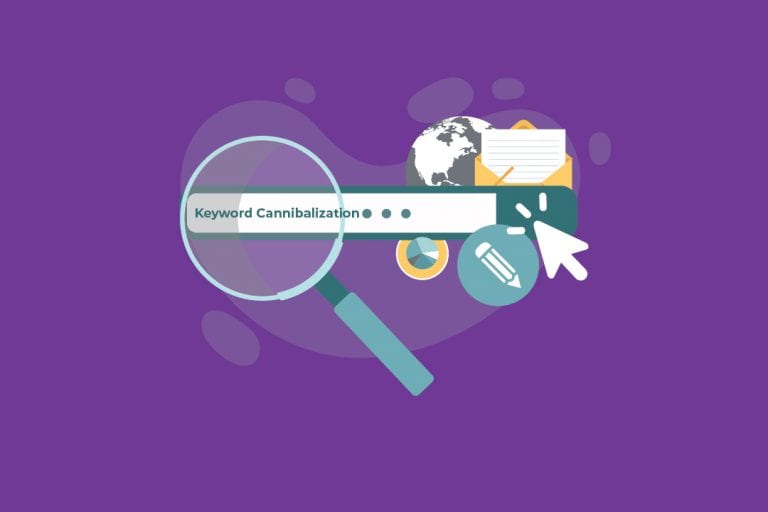
The term ‘keyword cannibalization’ can sound a little daunting if you don’t know what we’re referring to, which is fitting as doing so can hinder your site and pages. If you’re participating in keyword cannibalization, you’re competing for one keyword on multiple pages on the same site.
While you might think that this is a good idea as it offers you more of a chance of at least one of your pages ranking highly on the first page of Google, it actually does the complete opposite.
Google will see that you have multiple pages focusing on one keyword and struggle to decide which page deserves to be in the running for the high rank. Google bots are notorious for giving up when the going gets tough.
In fact, instead of putting the work in to find out which page is the most deserving, they’ll often leave both pages without a rank. Unfair, you might protest, but true nonetheless. Search engine bots are ruthless and you have to play by their rules.
Another issue with overusing a keyword is that the links and shares that the pages have accumulated will be split between one another, causing the site to have less overall authority and backlinks. Less authority will also lower your ranking.
Essentially what we’re saying is that if your pages are competing with each other, you’re more likely to not end up on the search results at all. So don’t do it!
If you are guilty of keyword cannibalization in the past, don’t worry – you’re not the first and you won’t be the last. The good news is that there is a way to fix the issue to stop your pages from clashing against one another to ruin your organic search traffic.
SEMrush can be used to determine which keywords your site is ranking for most successfully. Simply scan down the list to find any duplicate keywords and merge them together. If you don’t want to merge the pages, you can instead delete the multiples.
However, you should only delete the page if there are no backlinks or traffic going to that page, as deleting this will also affect your ranking.
8. Optimize for Long-Tail Keyword Variations
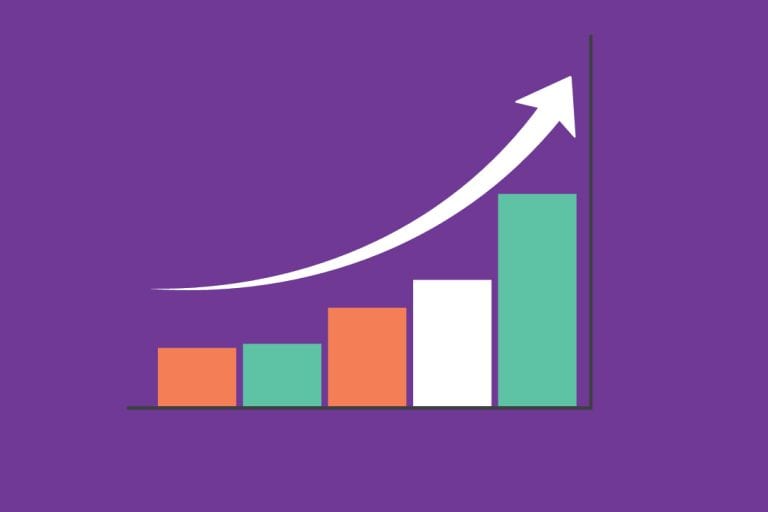
The more common your keyword is, the less likely you’re going to be highly ranked on Google or another search engine. Long-tail keyword variations can increase your traffic easily if this is the case.
Long-tail keywords are not searched for as much on a monthly basis, but they’re more likely to be converted later down the line. An example of long-tail keyword variations is as follows: the short keyword ‘pumpkin carving’ has a high search volume, yet a small conversion rate later down the line.
On the other hand, the long-tail keyword variation of ‘why are pumpkin carving kits so bad?’ has a lower search volume but is more likely to be converted. SEMrush is the best tool to help you find long-tail keyword variations.
Not only can you find the long-tail alternatives for the keywords you want to use, but you can also see the most effective long-tail variations that are driving the most traffic. Using these will offer you a decent amount of traffic as well as a good conversion rate.
9. Utilize Latent Semantic Indexing

As a website owner that wants to optimize their search engine results, you are effectively bowing down to Google. They are in control of your success so you have to follow their rules. If they find something that they don’t like, they will punish you by affecting your ratings.
To avoid this from happening, you’ll need to use LSI to your advantage. LSI is a tool that Google uses to identify patterns and gauge the value of the keywords that you have used. If you’ve used the keyword too many times in your content, Google won’t like it and lower your rating.
To avoid this, you need to come up with synonyms that relate to your keyword. You cannot use too many long-tail keyword variations in your piece either as these will be considered the original keyword. So, get your thinking cap on and think of some synonyms!
The synonyms will help to bring more visitors to your site by ensuring that the Google bots don’t lower your ranking due to too much keyword saturation. Although you should include the keyword multiple times, it’s best to leave it as no more than five for a general blog post. This will prevent the LSI from indexing your page as spammy.
10. Boost Your Digital Presence Via Social Media

Social media is one of the best marketing tools that we have to date, so make sure that you’re using all of the platforms to your advantage. Searching many keywords will generate a social media platform in one of the top spots, so they are very beneficial when you’re wanting to increase your organic search traffic.
Make sure to link your blog posts on social media and promote them. This will improve your direct traffic and click-through data. This is likely to give your pages and overall site more authority, which we have already established that Google loves.
You can also run a social media campaign if you want to build more signals to your site. Google bots will pick up on these signals and boost your rankings, so the more signals you gain the more likely you are to get a top spot on the search results.
Although social media campaigns often cost money to run, the results speak for themselves. In fact, paying for social media campaigns can sometimes be even more beneficial than paying for paid search traffic. You’ll be hard-pressed to find a popular website without a good digital presence nowadays, so don’t skip out on your posting schedule.
11. Fix Anything That’s Broken
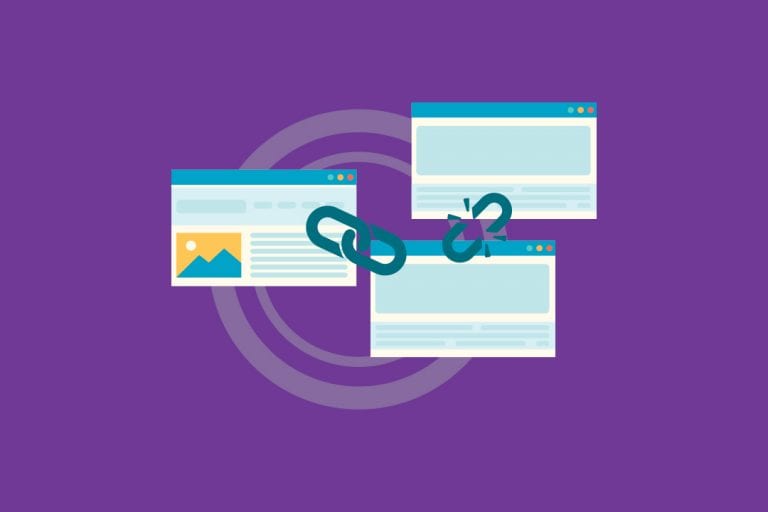
Technical errors on a website can be detected by the search engine’s bots within seconds and will often lose you marks when the algorithm is determining the order of the results. These kinds of errors can also prevent visitors from remaining on your page or coming back again. So, fixing anything that is broken is a very important tip.
Firstly, go through your entire website as a visitor and check every link, button, and page. Leave no stone unturned – it will come back to bite you later. After you’ve done this and have a list of concerns, you can fix them yourself or get help from a professional.
If you don’t think that there is anything technically wrong with your page, we would still advise that you get the help of a professional to make sure. The professional can then complete a comprehensive site audit for you to further fix any more complex issues.
There are also online services that you can use if you want to ensure that you catch all of the potential SEO errors on your pages. These can be free to use or paid for, and the former is often less effective.
If you’re interested in using an online service, SEOptimizer and SEMrush are among the top ones to opt for. We’d recommend that you search for any errors on your website every couple of months to ensure that there are no new errors occurring.
12. Set Up A Secure Website (HTTPS)

Another ranking factor for Google bots and the algorithm is the security of your website. Again, and we cannot stress this enough, Google wants to give its users the best experience possible. There is a reason why they’re the most used search engine!
For this reason, Google is only interested in promoting secure websites on the first page of search results. If you’re not HTTPS certified, you need to be. Most hosting companies offer free certificates for users nowadays, so what are you waiting for?
Even if your hosting company doesn’t, they should still offer a certificate for a reasonable price. A secure website will not only boost your rankings on the search results, but your bounce rate will be reduced as your visitors will feel more comfortable and secure while on your website.
If your website is not HTTPS secured, Google often offers its users a warning before they even reach your website. The warning will read something along the lines of ‘this website is not secure, are you sure you want to continue?’
And if this wasn’t enough, it is then made deliberately difficult for the visitor to accept the risk and click through to your website. This is undoubtedly going to affect your ranking and visitors, so it is vitally important that you get HTTPS certified sooner rather than later.
13. Utilize Your Blog With Great Content

It’s advised that any website that wants to generate visitors from organic search traffic should build a blog page and fill it with high-quality content. Instead of your main site pages where the content you can upload can be a little limiting, you can feel free to upload almost anything you like onto a blog page.
For example, both information and commercial requests can be included within a blog. You should fill your blog with relevant content such as news, infographics, and reviews. The main purpose of this is to make the visitor want to click through to your other pages. This will affect your bounce rate and therefore your ratings.
So, the visitors that stumbled onto your blog page will click through to your main page which counts as interactivity. As we’ve already mentioned, Google likes lower bounce rates and typically promotes sites with lower rates. This is why a high-quality blog is a great asset to anyone who wants to increase their organic search traffic.
14. Regular Website Content Updates

Updating your content can allow your pages to continue being ranked highly in search results for years to come. If you publish a page and leave it alone for months or years, the Google bots are going to take note of this and use it against you with the rankings.
You should always be updating your content with new information that you’ve learned between the time when you first posted it and now. Updates will improve your credibility and work in your favor when it comes to the bot’s index.
We’re not suggesting that you update your pages every week, as you wouldn’t have any spare time to push out new content. However, doing so every couple of months will allow you to take advantage of new keywords without having to write completely new material.
If your current page has some authority that you don’t want to go to waste, simply expand on the content and spruce it up a little. This will offer you the opportunity to gain more visitors while only doing a fraction of the work that it would take to write a completely new post.
Why create new content when you can use what you already have? Work smarter, not harder, and use your resources to keep your pages relevant in the search results. Ranking higher will allow you to be in the running for the top spots on the search results, offering you a higher opportunity of increasing your organic search traffic.
15. Check How Google Treats Your Website
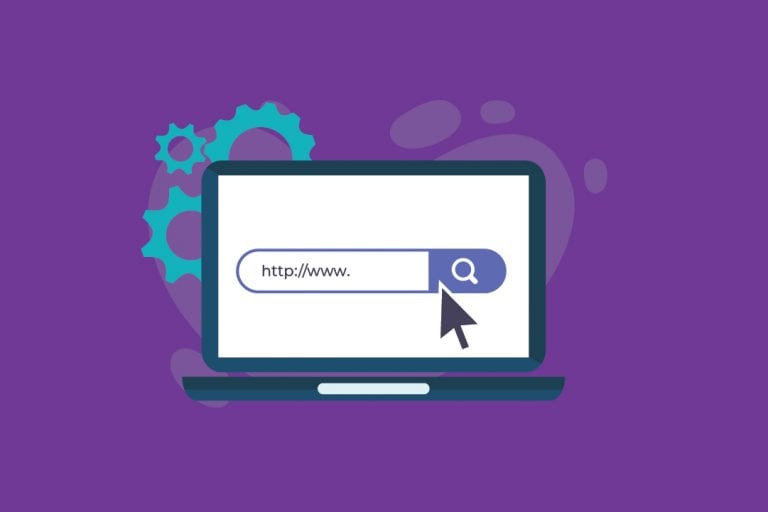
Now that you have improved your site with some of the tips above, you might want to know how to know whether it’s working or not. This brings us to our final tip – keep checking how Google is treating your website.
You can do this by using a keyword rank checker. This tool will help you see where your pages are being ranked based on the keyword searches. You can use the keyword rank checker repeatedly to see how well your pages are doing.
By being able to follow your rankings, you’ll be able to see how the Google bots are viewing your website. If you’re not happy with the results, you know that you need to revisit the tips above and change some more things.
Following along with the treatment of your website, you will be less discouraged if you don’t get into the top spots. Instead, you’ll know that you just need to keep working! Remember when we said it was a slow burner?
Conclusion
That concludes our 15 tips for increasing organic search traffic. Organic search traffic is that which is unpaid for and therefore very appealing to a lot of website owners. However, as you’re not paying for the privilege of remaining on top of the search results, you’re going to have to work harder to compete for the top three spots.
It would be near impossible to take all of our tips and implement them into your website straight away, so don’t break your back trying to change everything at once. Google uses bots to scan your website’s pages and look out for multiple factors. They will then use all of the information they collated and put it into an index for the algorithm to rank you with.
If you want to be ranked high enough that visitors will click through to your website rather than a competitor’s, you need to optimize your website and make sure that it follows all of Google’s demands.
Perhaps the most important tip is to focus primarily on the user experience across your site. Google wants to keep its users happy and therefore they will only promote pages that are user friendly and easy to use.
You can manipulate the Google bots to an extent, but make sure that you don’t get caught. Google bots are smart and they’ll detect spammy behavior which can greatly affect your ranking for the worse.
We’ve included plenty of different SEO online tool examples that can be used to help you optimize your website. Tools such as SEMrush and Ahrefs are very helpful as they offer multiple different services under one roof.
Using one of these tools can save you from having to pay for multiple different tools and they can help with keyword optimization, long-tail variations, and preventing you from falling victim to keyword cannibalization.
We would advise you to continue checking how Google treats your website by using a keyword rank checker. These allow you to see where you’re ranking in the current positions and whether you need to work to increase your position or not. This tool can also help keep you motivated on your organic search traffic mission – good luck!

